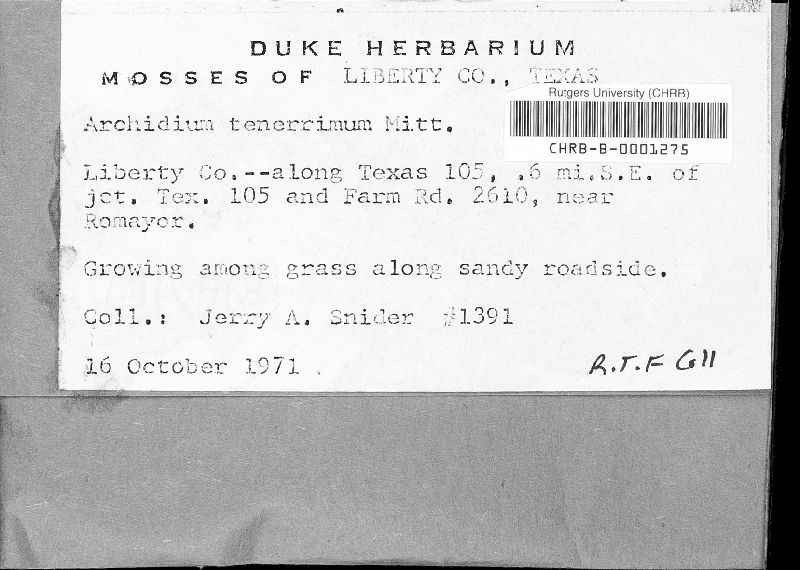Archidium tenerrimum
|
|
|
|
Family: Archidiaceae
|
Plants 3-10 mm, perennial, solitary or in dense mats, green or yellow-green. Stems simple to more often branched, varying from short to tall and somewhat flexuose, sterile innovations to 10 mm, becoming prostrate with age. Stem leaves small and distant on short plants to longer, erect-spreading on taller plants, ovate, ovate-lanceolate to lanceolate, acuminate to subulate, 0.5-1.5 mm; costa percurrent to short excurrent; laminal margins plane, smooth or finely serrulate distally; median laminal cells rhomboidal, 3-5:1, 50-90 × 14-25 µm, becoming somewhat shorter distally, proximal cells rectangular, similar to median cells, cells in alar region short-rectangular to quadrate, 1-2:1, in 2-3 rows extending from 3-10 cells distally from base along margin; leaves of innovations similar to stem leaves but smaller, gradually reduced abaxially. Perichaetial leaves variable in shape, erect-spreading to spreading, somewhat concave, sometimes flexuose, ovate to obovate, acute to short-acuminate or ovate-lanceolate and long-acuminate, 1-3 mm; costa percurrent to short-excurrent; laminal margins smooth, mostly recurved in longer leaves; median laminal cells rhomboidal to prosenchymatous, 3-5:1, 55-130 × 15-35 µm, somewhat shorter distally, proximal cells lax, rectangular, 4-6:1, 70-200 × 22-32 µm, hyaline in the alar region. Specialized asexual reproduction absent. Sexual condition paroicous; antheridia typically naked or rarely 1-2 small bracts present. Capsule terminal, sometimes appearing lateral due to rapid innovation growth, 450-800 µm. Spores typically 24(4-48) per capsule, rounded to polyhedral, 125-225 µm, smooth, pale yellow to yellow-orange. Capsules mature late fall to early spring (Oct-Mar). Common to uncommon on dry to moist sand, soil, in clearings, along roadsides, creek banks, open forests, pastures, often on soil of limestone and sandstone outcrops; 0-200 m; Ala., Ark., Fla., Ga., La., Miss., N.C., S.C., Tex.; Mexico; Europe; n Africa; Atlantic Islands. Archidium tenerrimum is very closely related to A. alternifolium, but is more variable in leaf and stem characters. It can usually be identified by its spreading perichaetial leaves with wider and more lax median lamina cells and the recurved margin. Short, dense and branching forms with broader leaves from drier habitats have been named A. ravenelii. However, these forms seem to intergrade with the taller narrower-leaved forms. More work is needed on the distinction between these two forms, as they tend to have different distributions as well as ecology.
|
|
|
|

